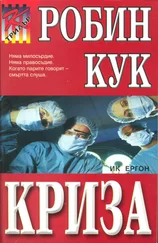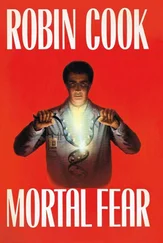Helen elevated her voice to compete with the rapid staccato typing. “William Michaels called and said he was sorry he wasn’t in when you paid your surprise visit to the computer lab. He wants you to phone. The people from Houston called about your chairing the Neuroradiology section at the national meeting. They said they have to know by today. Let’s see what else.”
While Helen shuffled through her messages, Philips was lifting up the incomprehensible sheets of computer paper covered with thousands of digits. The printer finally stopped producing the numbers and then drew a schematic of the lateral skull where the various areas were letter-coded. Philips realized that by finding the proper letter code he could find the sheet corresponding to the areas he was interested in. But still the printout did not stop. It then produced a schematic of the various areas of the skull and the density values were printed in shades of gray. That was the analog printout and it was easier to look at.
“Oh yeah,” said Helen. “The second angioroom is going to be out all day today while they install a new film loader.”
At that point Philips was not listening to Helen at all. Comparing areas in the analog printout, Martin saw that the abnormal areas had an overall density less than the surrounding normal areas. This came as a surprise because even though the changes were subtle, he’d had the mistaken impression the density was greater. Looking at the digital readout, Philips understood why. In the digital form it was apparent that there were wide jumps between the values of neighboring digits, which was why on the X rays he had thought there might have been little flecks of calcium or some other dense material. But the machine was telling him that the abnormal areas were overall less dense or more lucid than the normal tissue, meaning the X rays could pass through more easily. Philips thought about the nerve-cell death he’d seen in Pathology, but clearly that wasn’t enough to affect X-ray absorption. It was a mystery that Philips could not explain.
“Look at this,” he said, showing the digital readout to Helen. Helen nodded and pretended to understand.
“What does it mean?” she asked.
“I don’t know, unless...” Martin stopped in mid-sentence.
“Unless what?” asked Helen.
“Get me a knife. Any kind of knife.” Philips sounded excited.
Helen got the one from the peanut butter jar by the coffee urn, marveling at her weird boss. When she returned to his office, she gagged, unprepared for what she saw. Philips was lifting a human brain out of a formaldehyde jar, and putting it on a newspaper, its familiar convolutions glistening in the light from the X-ray viewer. Fighting off a wave of nausea, Helen watched as Philips proceeded to cut a ragged slice from the back of the specimen. After returning the brain to the formaldehyde he headed for the door, carrying the slice of brain on the newspaper.
“Also, Dr. Thomas’ wife is ready for you in the myelogram room,” said Helen, when she saw Philips was leaving.
Martin didn’t answer. He went quickly down the hall to the darkroom. It took his eyes a few minutes to adjust to the dim red light. When he could see adequately, he took out some unexposed X-ray film, put the brain slice on top of it, and put both into an upper cabinet. Sealing the cabinet with tape, he added a sign: “Unexposed film. Do not open! Dr. Philips.”
Denise called the GYN clinic when she got out of the CPC conference. Deciding she would be better able to evaluate the personnel if they did not know she was a physician she just indicated that she was part of the university community. She was surprised when the receptionist put her on hold. When the next person picked up, Denise was impressed with the amount of information the clinic requested prior to an appointment. They insisted on knowing about her general health, and even her neurological status, as well as her gynecological history.
“We’ll be happy to see you,” said the woman finally. “In fact, we have an opening this afternoon.”
“I couldn’t make that,” said Denise. “How about tomorrow?”
“Fine,” said the woman. “About eleven forty-five?”
“Perfect,” said Denise. After she hung up she wondered why Martin seemed suspicious about the clinic. Her initial reaction was very positive.
Leaning closer to the myelogram X ray on his viewer, Philips tried to figure out exactly what the orthopedic surgeon had done to Mrs. Thomas’ back. It appeared as if she’d had an extensive laminectomy involving the fourth lumbar vertebra.
At that moment Philips’ office door burst open, and an angry Goldblatt stormed in. His face was flushed and his glasses clung to the very tip of his nose. Martin gave him a glance, then went back to his X rays.
Being snubbed added to Goldblatt’s fury. “Your impudence is astounding,” he growled.
“I believe you stormed in here without knocking, sir. I respected your office. I think I should be able to expect the same from you.”
“Your recent behavior regarding private property doesn’t warrant such courtesy. Mannerheim called me at the crack of dawn screaming that you’d broken into his research lab and stolen a specimen. Is that correct?”
“Borrowed it,” said Philips.
“Borrowed it, Christ!” shouted Goldblatt. “And yesterday you just borrowed a cadaver out of the morgue. What the hell has gotten into you, Philips? Do you have a professional suicide wish? If that’s the case, tell me. It will be easier on both of us.”
“Is that all?” asked Philips with deliberate calm.
“No! It’s not all!” shouted Goldblatt. “Clinton Clark tells me you were haranguing one of his best residents in the GYN clinic. Philips, are you going crazy? You’re a neuroradiologist! And if you weren’t such a good one you’d be outta here on your ear.”
Philips remained silent.
“The trouble is,” said Goldblatt, with a voice that was losing its angry edge, “you are an outstanding neuroradiologist. Look, Martin, I want you to keep a low profile for a little while, okay? I know Mannerheim can be a pain in the ass. Just stay out of his way. And Christ! Stay out of his lab. The guy doesn’t like anybody in there, anytime, much less sneaking around at night.”
For the first time since his arrival, Goldblatt allowed his eyes to roam around Philips’ cluttered office. His jaw slowly dropped in amazement at the unbelievable disorder. Turning back to Philips, he eyed him silently for a full minute.
“Last week you were fine and doing a wonderful job. You’ve been groomed from the first to eventually run this place. I want you to return to that old Martin Philips. I don’t understand your recent behavior and I don’t understand the way this office looks. But I can tell you this, if you don’t shape up, you’ll be looking for another position.”
Goldblatt spun on his heels and walked out of the room. Philips sat silently staring after him. He didn’t know whether to be angry or laugh. After all his thoughts of independence, the idea of being fired was terrifying. As a result, Martin became a whirlwind of directed activity. He ran around the department and checked all the cases in progress giving certain suggestions when needed. He read all the morning films that had accumulated. Then he personally did a left cerebral angiogram on a difficult case, which definitely demonstrated the patient did not need surgery. Getting the medical students together he gave them a lecture on the CAT scanner which left them either dazzled or totally confused, depending on their degree of concentration. In between he kept Helen busy answering all the correspondence and messages that had accumulated over the last few days. And in addition to everything else, he had a clerk rearrange the mass of skull films in his office in a systematic way, so that by three in the afternoon he had also managed to run sixty of the old films through the computer and had compared the results to the old reading. The program was functioning superbly.
Читать дальше












